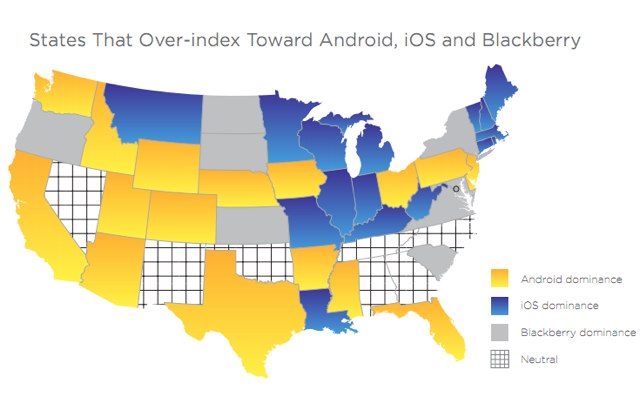A Tulsa World analysis of state records shows that the number of Oklahoma public school students doing schoolwork through computer-based programs has increased nearly 400 percent over the last three years.
The state's most recent official count of virtual students for 2010-11 was 5,429. That's about the combined student population of Tulsa Hale and Broken Arrow high schools.
"Everyone is trying to get their arms around the scope of what's being offered and how fast it's moving," said Damon Gardenhire, communications director for the Oklahoma State Department of Education. "While this is something we think education as a whole should embrace, like anything else, it is something we should be taking a close look at in terms of quality and consistency.
"There is a lot of excitement and also a desire to ensure that we're doing all the right things."
While the programs are offered at no cost to students, most are operated by for-profit companies that contract with public school districts.
A Tulsa World analysis shows that the number of Oklahoma public school students doing schoolwork through computer-based programs has increased nearly 400 percent over the last three years.
White Oak, an unincorporated community between Chelsea and Vinita, boasts the most virtual students in part because of its early foray into online education as well as its partnership with K12, a Virginia-based company that invests in radio, television, online and direct-mail advertising.
K12 offers virtual programs in more than half of the U.S., and most are named for the state they serve. So when you see a commercial seeking out students for the "Oklahoma Virtual Academy," they are actually seeking out kids in grades 1-8 to transfer into the White Oak district and kids in grades 9-12 to transfer into Wynona Public Schools, the company's virtual high school partner.
Those districts keep 5 percent of the state funding for virtual students and send the rest to K12.
The arrangement is similar for Oklahoma's first virtual charter school, Epic One on One, which is preparing to open its inaugural academic year in early September.
Graham Public Schools, the small Okfuskee County school district that sponsors Epic, gets to keep 5 percent of state funds as an "administrative fee," but the rest will be overseen by the charter school's independent governing board.
Questions and concerns about profit-driven motives and accountability for public dollars are the most commonly raised ones by leaders of school districts losing students to other schools' virtual programs.
Rick Mansheim, who is employed by K12 as head of school for Oklahoma Virtual Academy, said the company is actually losing money on the venture right now.
"There is no management fee for K12 in Oklahoma because there isn't enough funding in Oklahoma to make that work," he said. "The money basically all stays in Oklahoma in the form of salaries and curriculum materials, and K12 actually contributes some money. We do believe that at some point there is a future here. We believe in what we do. We view it as an investment in school choice."
Mansheim is also frank when asked about reports of high turnover rates among virtual students.
For example, the state Department of Education had White Oak's official virtual student count at 973 for 2010-11. Those official numbers were used to determine state funding, but Mansheim said they ended the school year with only 837 students on the rolls.
"That's really the norm with online," Mansheim said. "The students sign up for it, they get into it and find out it's not as easy as they thought. We end up losing a lot of students just because of the rigor of the program. Also, there is a lot more involved for the parent or learning coach. We also lose a lot during state testing."
Dusty Chancey, superintendent of Graham Public Schools, Epic One on One's sponsor, readily admits to having concerns that online learning is simply "not for some kids."
"Most kids can text, but not all of them can learn the core curriculum in the virtual classroom," he said. "They need the personal interaction. A lot of these students need the opportunity to try this mode of education but soon decide it's not for them."
He said he thinks one way to address concerns about the accountability of public funds would be to check virtual student enrollment or attendance quarterly instead of just twice a year.
"We have also taken the initiative and decided to drop students (from the rolls) ourselves after 16 days of no activity on the Internet," he said. "You could sit there and let them run the whole 180 days, but that's not ethical."
Epic, which had billed itself as a strictly online program, caused red flags to go up last month when it began advertising an elementary school site in north Tulsa and full-day pre-kindergartens in Oklahoma City and Norman.
State officials informed the school that physical locations outside of its sponsoring district would violate the charter school law, so Chancey said parents who were going to use those sites have since been notified that they won't open after all.
He added: "I would rather do it right the first time and ask permission than have to go back and beg forgiveness. From what I've seen in other states and what they're doing with virtual schools, I want the one in Oklahoma to succeed. If you look at post-secondary education, you can get your bachelor's and master's online from probably 90 percent of the colleges in Oklahoma. Why not get them ready to do that in high school?"
Expansion of online learning in Oklahoma
- Growth trend in students enrolled in virtual classes: 1,102 in 2008-09, 2,600 in 2009-10, to 5,429 in 2010-11
- Number of school districts with virtual students during same three-year period: 20 to 48 to 154
Districts with most virtual students, as of February:
1. White Oak: 973
2. Tulsa: 508
3. Hanna: 350
4. Wynona: 170
5. Graham: 157
6. Oklahoma City: 133
7. Midwest City-Del City: 122
8. Muskogee: 108
9. Bartlesville: 104
10. Berryhill: 101
Largest providers of online programming in the state: Advanced Academics, E 2020 and K12
















